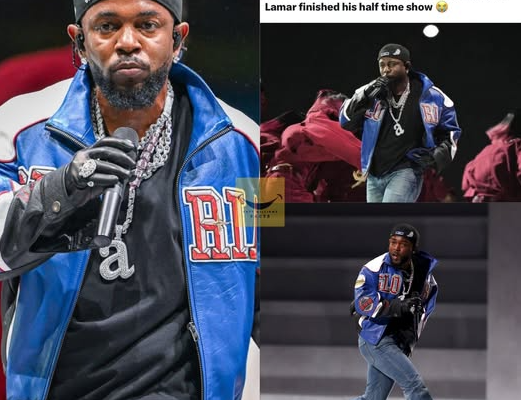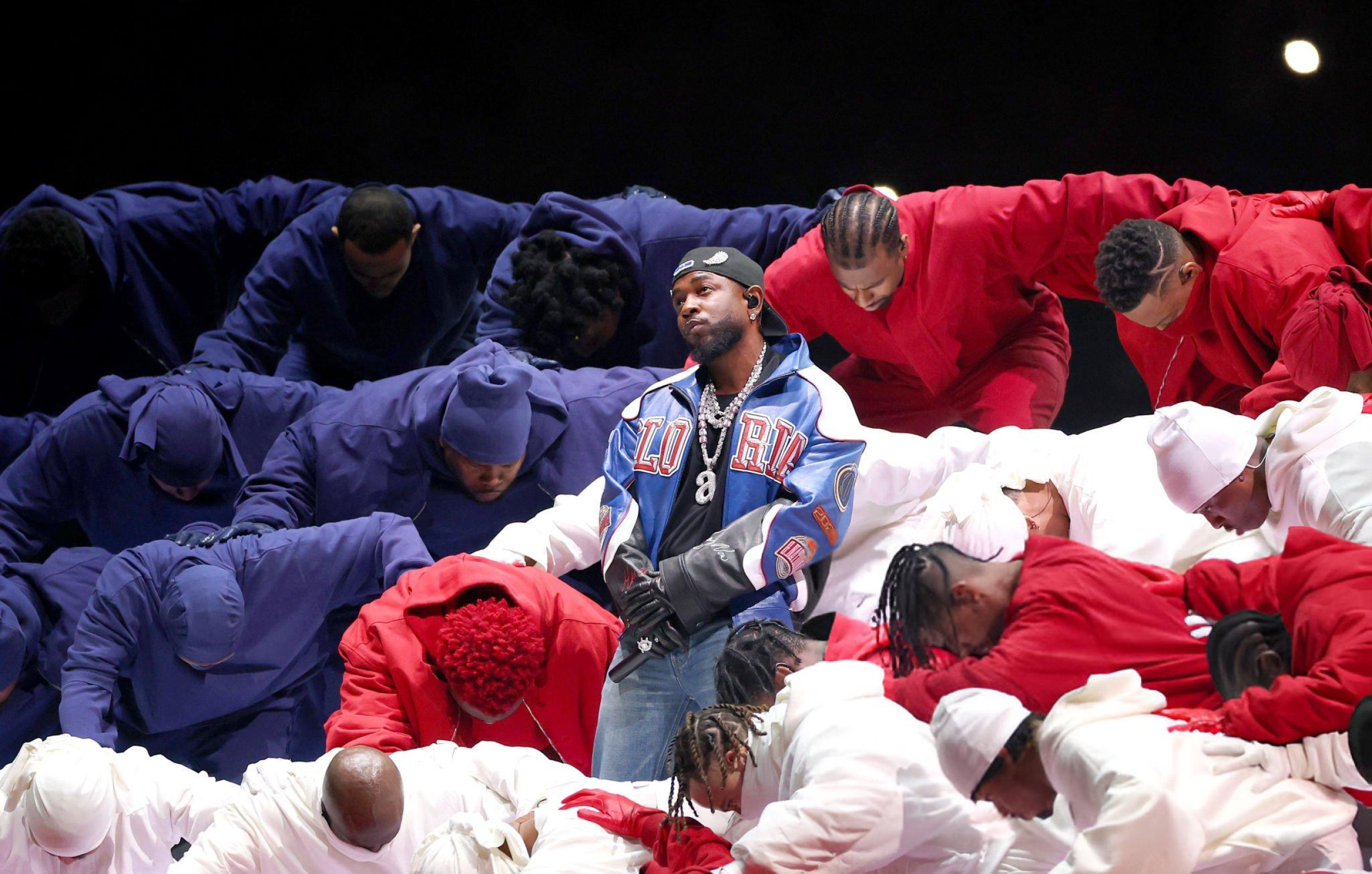
The Kendrick Lamar Super Bowl halftime show has undoubtedly captured the attention of millions, sparking discussions about its cultural significance and underlying message. As one of hip-hop’s most prominent figures, Lamar’s performance was more than just a musical showcase; it became a critical examination of systemic issues wrapped in the fabric of America’s beloved pastime.
The Context of Kendrick Lamar’s Performance
To better understand the resonance of Kendrick Lamar’s performance during the Super Bowl, we must delve into the context surrounding his artistry and the event itself. The Super Bowl halftime show has long been a platform for diverse performers, showcasing everything from mainstream pop to groundbreaking acts. However, when an artist like Kendrick Lamar steps onto this stage, their work transcends mere entertainment and speaks to deeper societal issues.
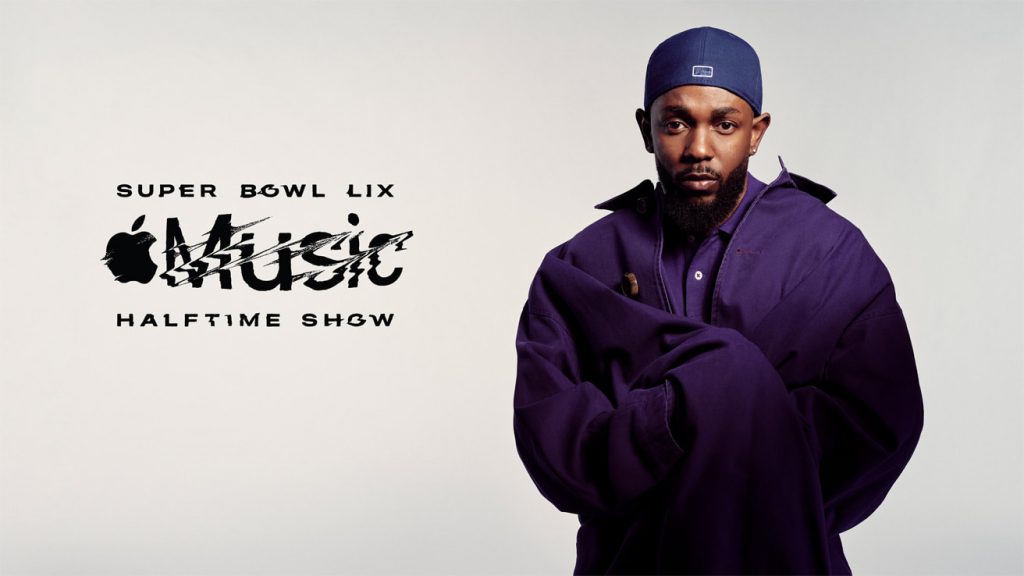
Historical Significance of the Super Bowl Halftime Show
The history of the Super Bowl halftime show is rich and varied. Initially featuring marching bands and traditional performances, it evolved dramatically over time, becoming a spectacle that attracts some of the biggest names in music. This transformation paralleled shifts in American culture, where the Super Bowl emerged not just as a sporting event but as a cultural touchstone reflecting national identity.
With its massive viewership, the halftime show presents an unparalleled opportunity for artists to reach audiences while providing commentary on pressing social issues. This pivotal moment raises questions about the intersection of capitalism and activism—whether such performances can truly effect change or simply serve as entertainment within a commercial framework.
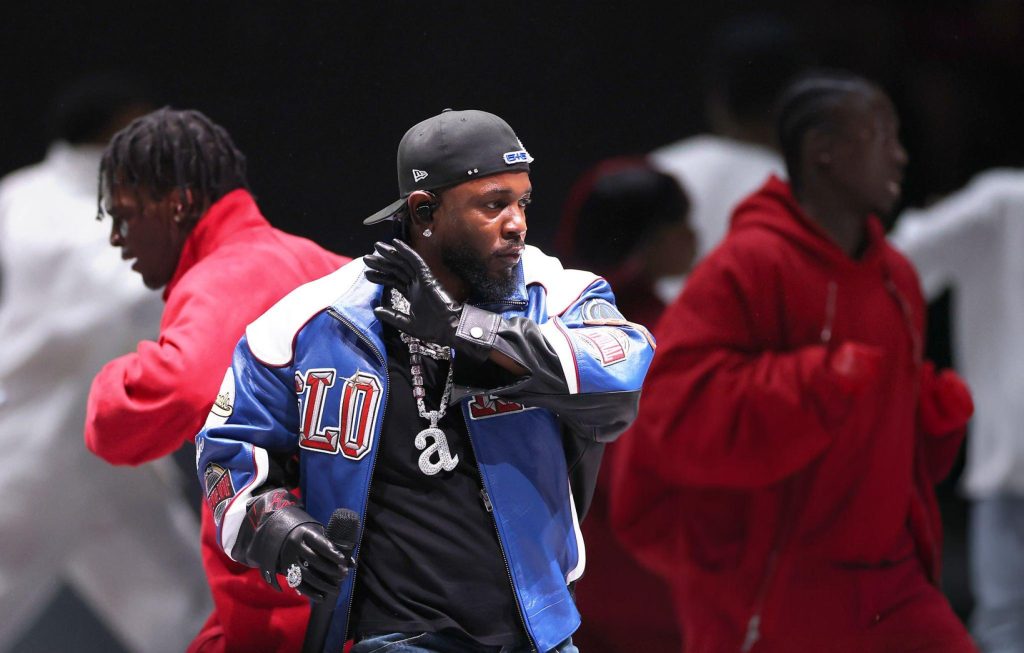
Lamar’s Rise to Prominence in Hip-Hop
Kendrick Lamar’s ascent in the hip-hop industry is emblematic of a broader cultural shift, merging personal narrative with political critique. His discography—filled with incisive commentary on race, identity, and systemic oppression—resonates deeply within communities historically marginalized in America. Songs like “Alright” and “The Blacker the Berry” challenge listeners to confront uncomfortable truths about societal disparities.
Lamar’s artistry is characterized by its authenticity and depth; he utilizes his platform to engage with themes that many would rather avoid. By the time he took center stage at the Super Bowl, he had already established himself as a voice for the voiceless, using his music to advocate for change and inspire self-liberation among his listeners.
The Paradox of Celebrity and Activism
As an artist who promotes social justice, Lamar embodies the paradox faced by many celebrities: the tension between being a public figure and advocating for radical change. While his performances invite viewers to think critically about systemic issues, they also raise an important question: can one achieve true revolutionary impact while operating within a capitalist system?
This duality offers fertile ground for analysis, as Lamar’s fame grants him visibility and influence. Still, it also places him in a challenging position where his messages may be co-opted or diluted by commercial interests. The Kendrick Lamar Super Bowl halftime show encapsulates this struggle perfectly—can art that critiques the very system that supports it foster genuine change, or does it merely become another cog in the machinery of entertainment?
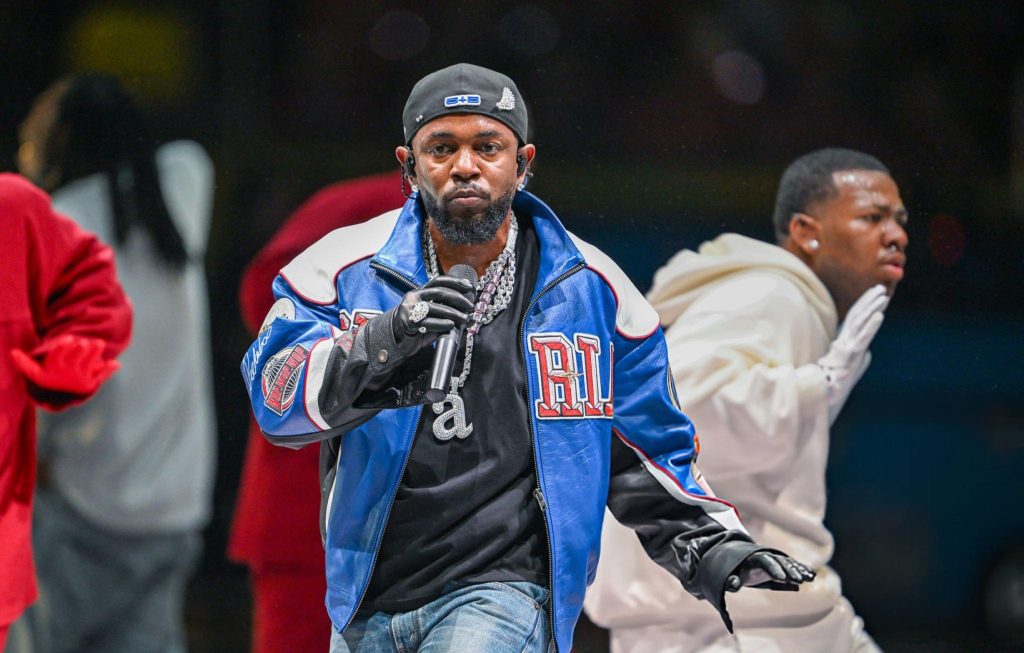
The Great American Game Metaphor
At the heart of Lamar’s performance lies the metaphor of the great American game. In his innovative storytelling, Kendrick uses this motif to link the historical exploitation of Black labor with contemporary societal issues.
The Opening Statement: “The revolution ‘bout to be televised”
With a powerful opening statement, Kendrick invites viewers to re-examine the narrative surrounding the ongoing struggle for civil rights and equality. The phrase “the revolution will not be televised”—a reference to Gil-Scott Heron—underscores the urgency of activism in a world inundated with distractions.
By invoking such potent imagery, Lamar emphasizes the importance of grassroots movements over media representation. His performance serves as a clarion call, reminding audiences that real change occurs outside the confines of television screens and grand spectacles. It urges individuals to participate actively in the fight against systemic oppression rather than remaining passive consumers of entertainment.
Visual Symbolism: E-Sports, Plantation Imagery, and Control
The visual elements accompanying Lamar’s performance further reinforce this theme. The use of PlayStation controller buttons juxtaposes modern technology with historical plantation imagery, symbolizing the ongoing exploitation of Black Americans within a capitalist framework. Here, Lamar critiques the commodification of Black culture, presenting a stark contrast between entertainment and reality.
The prison yard set serves as a poignant reminder of the mass incarceration epidemic affecting Black communities today. By integrating these visuals into his performance, Lamar effectively bridges past and present, illuminating the cyclical nature of oppression while challenging viewers to confront these uncomfortable truths.
The Role of Uncle Sam in Framing the Narrative
One of the standout moments in the performance was the introduction of Samuel L. Jackson as Uncle Sam—a character embodying respectability politics and traditional American values. This framing positions Lamar as the rebel, questioning the status quo and demanding accountability from those in power.
Uncle Sam’s nervous demeanor represents the discomfort felt by those who benefit from systemic inequalities yet cling to outdated notions of respectability. In contrast, Lamar’s raw energy and rebellious spirit reflect the voices of a generation that refuses to remain silent. This dynamic interplay between characters highlights the stakes involved in the struggle for justice and the various approaches to achieving social change.
The Tension Between Art and Commercialism
The recurring theme of commercialism provides a framework through which we can analyze the effectiveness of Lamar’s performance. The NFL, as a major commercial entity, operates under a capitalistic model that often prioritizes profit over social consciousness. This raises significant questions regarding the ability of artists like Lamar to incite change from within such a system.
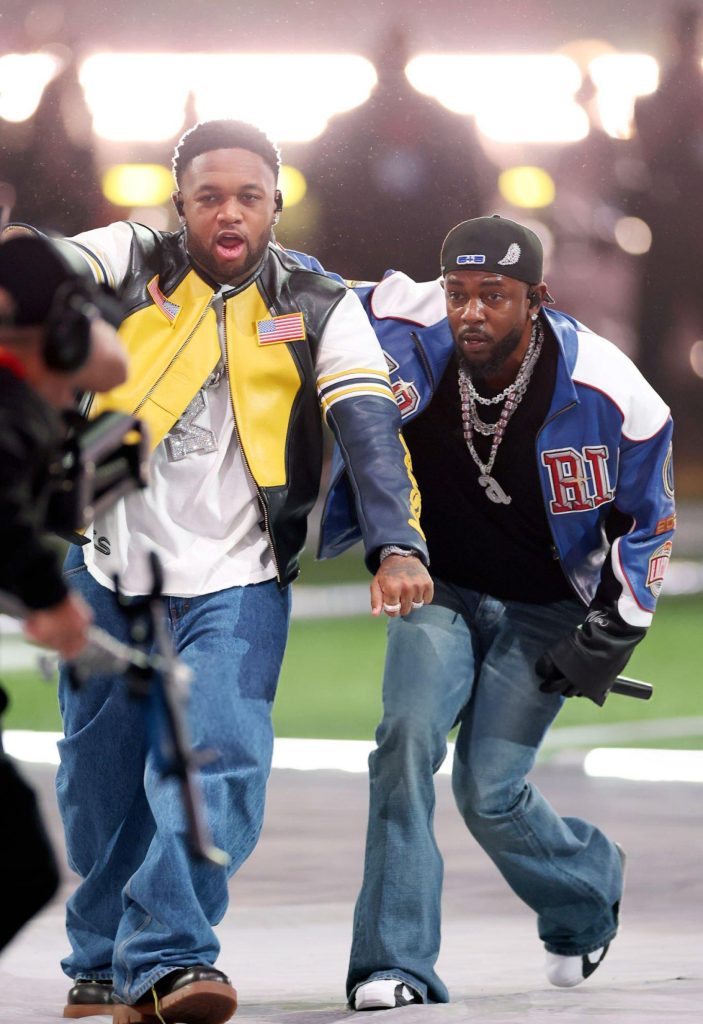
The NFL as a Platform for Social Commentary
While the NFL has made strides to address social justice issues—most notably through initiatives like the “Inspire Change” campaign—these efforts are often scrutinized for their motives. Are they genuine attempts to foster change, or simply strategic moves to assuage public outcry?
Kendrick Lamar’s decision to perform during the Super Bowl reflects an awareness of this tension. While he utilizes the platform to highlight systemic injustices, he simultaneously engages with an institution that has faced criticism for its treatment of players, particularly those who have protested against racial inequality. This delicate balance complicates the narrative, prompting viewers to consider the implications of art within a commercial space.
Critiquing the System from Within: Lamar’s Position
Lamar’s position as a celebrated artist allows him to navigate this terrain in a unique way. By performing at the Super Bowl, he gains access to an expansive audience, amplifying his message far beyond typical venues. However, this also necessitates a nuanced understanding of his role within the industry.
His performance becomes a form of subversion—an act of resistance that critiques the very platform that hosts it. Lamar wields his artistic agency to challenge the status quo while acknowledging the limitations imposed by commercial interests. This tension enhances the power of his message, demonstrating that meaningful critique can still emerge from within the folds of the establishment.
The Contradiction of Revolutionary Imagery in Commercial Spaces
Despite the impactful nature of Lamar’s performance, the inherent contradiction remains: can revolutionary imagery thrive in commercial spaces? The spectacle of the Super Bowl creates an environment that often prioritizes entertainment value over substantive dialogue, leading one to question whether such performances can genuinely catalyze change or merely serve as moments of fleeting awareness.
The answer may lie in the transformative potential of art. While the commercial nature of the NFL may dilute certain aspects of Lamar’s message, the sheer visibility and cultural weight of events like the Super Bowl allow for discussions around systemic injustice to permeate popular consciousness.
Key Performative Elements and Their Implications
Beyond the thematic exploration, Lamar’s performance was laden with key performative elements that added layers of meaning to his presentation. From set design to choreography, every aspect contributed to the overarching narrative.
Set Design: From GNX to Prison Yard
The stark contrast between the vibrant visuals of the GNX (Ghetto National Express) and the somber prison yard set illustrated the duality of Black experiences in America. On one hand, the celebration of culture and community; on the other, the harsh realities of oppression and marginalization.
This juxtaposition serves to forcefully convey the complexity of the Black American experience. By moving seamlessly between these settings, Lamar immerses viewers in a world where joy and pain coexist, emphasizing the need for resilience in the face of adversity.
Dance and Visual Representation of Black American Culture
Dance played a crucial role in Lamar’s performance, serving as a vehicle for cultural expression. The choreography highlighted elements of Black American culture, drawing on traditional forms while infusing them with contemporary styles. This celebration of heritage reinforces the idea that joy can be found even amidst struggle.
Moreover, the dancers’ movements mirrored the themes of control and liberation, elevating the narrative beyond mere performance. Each gesture and formation served as a powerful reminder of the strength found in community, pushing back against narratives that seek to erase or diminish Black voices.
Not Like Us: Navigating Personal and Political Battlefields
Among the standout tracks performed was “Not Like Us,” a controversial diss aimed at fellow artist Drake. This track exemplifies the intricate balance between personal expression and broader political commentary. While the lyrics tackle interpersonal rivalries, they also reflect larger themes of competition and ambition within the music industry.
By including this track in his performance, Lamar navigates personal and political battlefields simultaneously. He reminds viewers that the struggles faced by artists often mirror those experienced by marginalized communities, urging society to recognize the interconnectedness of these narratives.
Conclusion: Reflections on the Impact of Kendrick Lamar’s Performance
Kendrick Lamar’s Super Bowl halftime show was not merely a display of musical talent; it represented a crucible where art, activism, and commercialism intersected. Through powerful visuals, provocative themes, and an unwavering commitment to authenticity, Lamar utilized this platform to ignite discourse around systemic issues that continue to plague American society.
However, the complexities of navigating a commercial space such as the Super Bowl raise essential questions about the efficacy of revolutionary messaging within such contexts. While Lamar’s performance undeniably inspired many and challenged viewers to reflect on uncomfortable truths, it also served as a poignant reminder of the limitations that capitalism imposes on art.
In evaluating the impact of Kendrick Lamar’s performance, we must acknowledge its capacity to inspire self-liberation while grappling with the paradox of presenting revolutionary ideas within the confines of a commercial spectacle. Ultimately, it invites us to examine our own roles in the pursuit of justice, encouraging active participation in the ongoing fight for equality and empowerment. Thus, the Kendrick Lamar Super Bowl halftime show stands as a testament to the power of art as a tool for social commentary, leaving an indelible mark on both the cultural landscape and the hearts of those who witnessed it.
